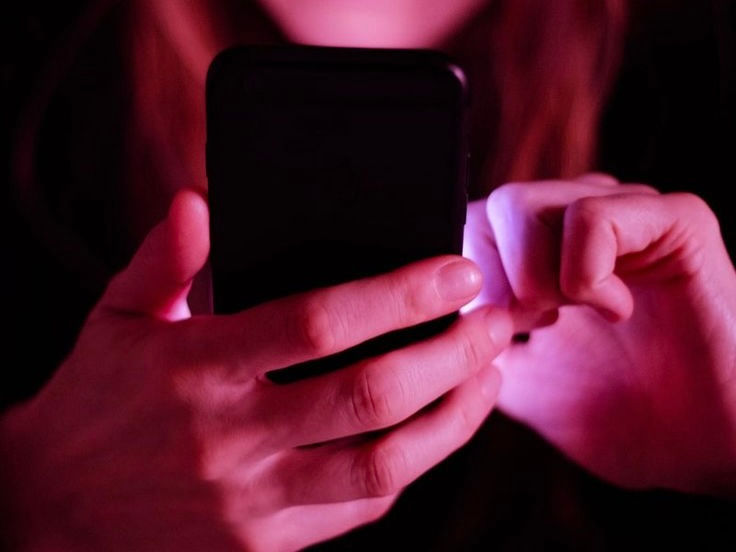Your Phone Is Frying Your Brain—9 Ways to Break the Doomscrolling Habit
- jennysmithmattfeldt

- May 27
- 4 min read
Updated: May 30
Nine Effective Tactics to Help You Reclaim Your Focus, Creativity, and Motivation.
By Jenny Smith Mattfeldt | Published May 27, 2025

Every time you see something that entertains, inspires, or even just catches your attention, your brain releases a little hit of dopamine—your feel-good neurotransmitter. The problem is scrolling on social media trains your brain to crave short, fast, unpredictable bursts of pleasure. This rewires your reward system to favor quick fixes over long term, healthier satisfaction. Meaning scrolling actually becomes addictive, not because you love it, but because your brain is chasing the next mini high.
Platforms like TikTok and Instagram are built on rapid content delivery, and not only is it an endless stream of content but the constant switching between videos, reading, and images begins to fragment your focus. Over time, this can reduce your ability to concentrate for long periods, making you feel like you need to grab your phone during books, conversations, movies or when work feels “boring.”
Dr. Gloria Mark, a leading expert on attention and digital behavior, has conducted extensive research on how our attention spans have evolved in the digital age. In her studies, they found that "Back in 2004, we found that people averaged two and a half minutes on a screen before switching. In the last, I would say, five or six years, we found that attention spans average 47 seconds on a screen before switching.”
"We find in our research a correlation between frequency of attention switching and stress. So the faster the attention switching occurs we show that stress goes up." — Dr. Gloria Mark

It starts to train your brain that you can achieve something quickly without any effort. Normally, accomplishing something (a goal, a workout, a relationship) takes effort, then it's followed by a reward. Social media skips the effort and delivers the reward anyways: likes, comments, entertainment, social acceptance. Over time this fries your motivation circuits making your real-life tasks feel harder and less satisfying.
Maybe one of the saddest results of over loading the brain with constant stimulation is the reduction in your own creativity. When you never give your brain a chance to be bored you block the state where creativity tends to spark. This is why some of your best ideas show up when you're in the shower or doing a repetitive task where your brain can be quiet. Scrolling has started to fill every quiet moment which crowds out deeper, problem solving, critical thinking, and creative thoughts.

Obsessively scrolling, or doom scrolling, is a habit loop built on overstimulation, anxiety, and avoidance, so the key is to interrupt the loop in smart, subtle ways. Here are 9 tactics that actually work to help you scroll less (without needing to delete your apps forever).
Set App Time Limits (and Actually Respect Them)
Use built-in phone features like Screen Time (iOS) or Digital Wellbeing (Android) to:
Set daily limits on social apps
Schedule app “downtime” (e.g., after 8 PM)
Add a passcode to extend time (so it’s a friction point, not automatic)
Set your time limit slightly under your current usage, then reduce it weekly.
Turn Your Screen to Black & White
This is low-effort but weirdly effective. Removing color makes social media less stimulating and addictive. You can do this:
On iPhone: Settings → Accessibility → Display & Text Size → Color Filters → Grayscale
On Android: Settings → Digital Wellbeing → Wind Down → Grayscale
Use it like a "scrolling of switch" when you're winding down at night or trying to focus.
Move the App Off Your Home Screen
Bury Instagram or TikTok in a random folder labeled something boring like “Utilities.” This adds friction and breaks the automatic swipe-and-tap habit.
Replace the Habit, Not Just the App
When you feel the urge to scroll, give your brain another easy reward:
Open a Kindle or audiobook app
Try a 3-minute journal (Notes app works fine)
Step outside for 90 seconds and look around
The goal is to redirect the craving, not just resist it.
Install a "Pause" App
Apps like One Sec or Forest force you to breathe, wait, or think before opening a social app. That pause interrupts the autopilot.
One Sec literally makes you wait 5–10 seconds before your app opens. It's shocking how often that’s enough to make you exit.
Curate a Healthier Feed
Doom scrolling often spirals because your algorithm feeds you negativity, fear-based content, and everyone else's highlight reel. Clean house by:
Unfollowing accounts that make you anxious or inferior
Following creators that are calming, funny, or insightful
Muting without guilt
Your feed trains your brain—don’t let it feed on junk.
Use the “Bathroom Rule”
This is silly but works: Only allow yourself to check social media in one specific spot, like the bathroom or during a walk. It limits mindless scrolling everywhere else.
Start “No Scroll” Zones
Pick one time block a day when you absolutely don’t scroll—like the first 30 minutes after waking up or the last 30 before bed. Make it sacred.
Track Your Triggers
Is it boredom? Avoidance? Loneliness? Pay attention to when you scroll. Once you know your triggers, you can meet the need in better ways (call a friend, journal, move your body, etc.).





Comments